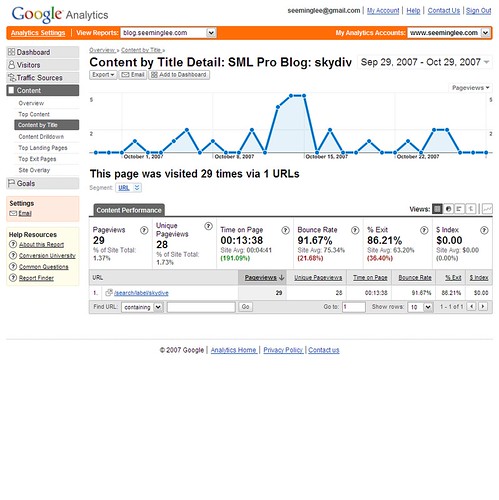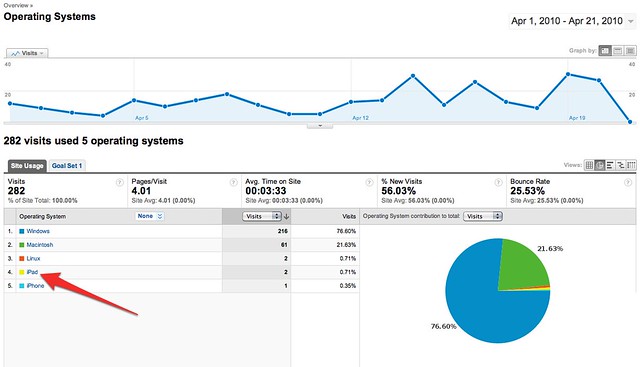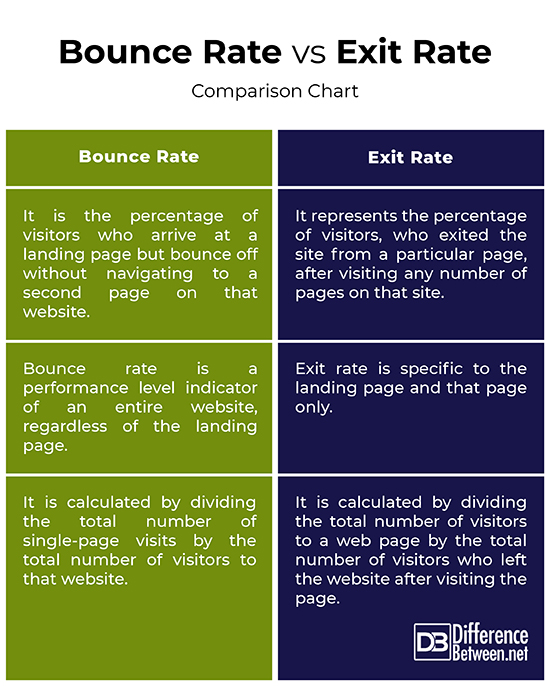Difference Between Bounce Rate and Exit Rate in Google Analytics
As analytics applications go, Google Analytics is probably one of the most popular and sophisticated web analytics software out there in the market today. Web analytics is undoubtedly the foundation for running a successful website. It enables you to identify what works and what doesn’t from the visitor’s point of view. If you know how, there’s actually a lot to harness using the power of Google Analytics. It is the Google’s free web analytics service that monitors website traffic by providing in-depth details about the visitors’ activities on your website.
To get the most out of Google Analytics, you need to understand the key performance indicators (KPIs) that are associated with actions on your website. Google Analytics provides a lot of valuable metrics which marketers can use to make data-driven business decisions. Two such performance metrics are bounce rate and exit rate which measure the quality of page on a website. Let’s take a look at the two performance metrics and how they can be used to measure your business KPIs using Google Analytics.

What is a Bounce Rate?
Bounce rate is a popular performance metric used in web traffic analysis. It is defined as the percentage of visitors who arrive at a landing page but bounce off without navigating to a second page on that website. Bounce rate is the ratio of single-page sessions to all sessions and it shows how effective the pages on your site are. A bounce is when a visitor views a page and immediately leaves without visiting other pages within the same website. It is calculated by dividing the total number of single-page visits by the total number of visitors to that website. For example, if there are a total of 1,000 visits to a website and only 200 leave after a single page, then the bounce rate is 20%. So, if a landing page has a high bounce rate, then it means the content of the page did not meet the visitors’ expectations.

What is Exit Rate?
Exit rate is also a page-level indicator used in website traffic analysis and is often confused with the bounce rate as both the metrics measure similar things. Exit rate, sometimes called page exit ratio, is the percentage of exits on a web page meaning the percentage of visitors who leave the website from individual pages. By definition, all visitors eventually exit at some point, but not all visitors bounce off of single page visits. Exit rate is the indicator of the last pages that the visitors – who visited either single page or multiple pages – viewed before they exited the website. So, unlike bounce rate which is a performance indicator of an entire website, exit rate is specific to the page and that page only. Exit rate represents the percentage of visitors, who exited the site from a particular page, after visiting any number of pages on that site. For example, if 10,000 people view a web page within a single day and 2,500 leave after viewing that page, then the exit ratio is 25%.
Difference between Bounce Rate and Exit Rate in Google Analytics
Definition
– Both are the key performance metrics which measure the quality of page on a website and are often confused with each other. Bounce rate is defined as the percentage of visitors who arrive at a landing page but bounce off without navigating to a second page on that website. Exit rate is yet another page level indicator which is defined as the indicator of the last pages that the visitors – who visited either single page or multiple pages – viewed before they exited the website.
Calculation
– Bounce rate is a performance level indicator of an entire website, regardless of the landing page, whereas exit rate is specific to the landing page and that page only. Bounce rate is calculated by dividing the total number of single-page visits by the total number of visitors to that website. Exit rate, on the other hand, is calculated by dividing the total number of visitors to a web page by the total number of visitors who left the website after visiting that web page.
Example
– Let’s assume a page receives a 10,000 page views in a single day, and of those views, there are 1,500 entrances to that page. And out of the 1,500 total entries to the page, there are 1,000 visitors who left immediately after single-page visits. A total of 2,000 exit the site after arriving at the page.
Bounce rate = Total number of single-page visits/ Total number of visitors to the site
Bounce rate = 1,000/1,500 = 66.66%
Exit Rate = Total number of page exits/ Total number of page views
Exit rate = 2,000/10,000 = 20%
Notice that the 2,000 exits also include the 1,000 who left after single-page views.
Bounce Rate vs. Exit Rate: Comparison Chart

Summary
Bounce rate is the percentage of visitors who visit a site, view only one page, and leave without viewing any other page on the website. It is never to be confused with the exit rate, which is also a page level indicator showing the percentage of visitors who leave a website from a particular page after visiting at least one other or multiple pages in the website. So, bounce rate is a measurement across an entire website, regardless of the landing page, whereas exit rate is specific to the page and that page only.
- Difference Between Caucus and Primary - June 18, 2024
- Difference Between PPO and POS - May 30, 2024
- Difference Between RFID and NFC - May 28, 2024
Search DifferenceBetween.net :
Leave a Response
References :
[0]Clifton, Brian. Advanced Web Metrics with Google Analytics. Hoboken, New Jersey: John Wiley and Sons, 2010. Print
[1]Ledford, Jerri L. et al. Google Analytics. Hoboken, New Jersey: John Wiley and Sons, 2011. Print
[2]Saleh, Khalid and Ayat Shukairy. Conversion Optimization: The Art and Science of Converting Prospects to Customers. Sebastopol, California: O'Reilly Media, 2010. Print
[3]Freed, Larry. Innovating Analytics: How the Next Generation of Net Promoter Can Increase Sales and Drive Business Results. Hoboken, New Jersey: John Wiley and Sons, 2011. Print
[4]Goward, Chris. You Should Test That!. Hoboken, New Jersey: John Wiley and Sons, 2012. Print
[5]Karr, Douglas and Chantelle Flannery. Corporate Blogging for Dummies. Hoboken, New Jersey: John Wiley and Sons, 2010. Print
[6]Image credit: https://live.staticflickr.com/4004/4539654265_46c088e3d9_z.jpg
[7]Image rcedit: https://live.staticflickr.com/2229/1806810592_88f4547702.jpg
